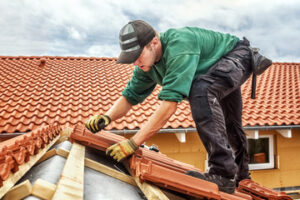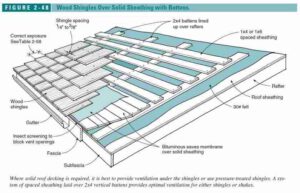Retaining Wall Installations help correct ground slopes, add curb appeal, and create new usable areas within your landscape. They also help with erosion control and drainage issues.
Be sure to hire a geotechnical engineer if you build a wall over four feet tall. This will save you from costly corrections down the road.
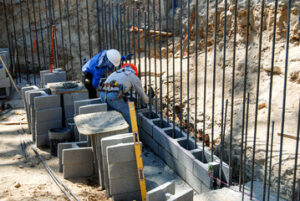
Retaining walls is vital to any property, as it can help prevent erosion and redirect water flow. In addition, they can add value to your home and create new landscaping areas. However, they can also be expensive to install and maintain. To avoid surprises, you should have a clear understanding of how much they cost.
The initial build cost of your retaining wall will depend on the type of materials you choose and any necessary soil preparation. The contractor will dig a trench and backfill it with gravel to prepare the area for the wall. They will then start building. If you want a retaining wall with a specific style, you may need to spend more on the materials. For example, a stone wall costs more than a vinyl one. You can also save money by using less-expensive materials such as railroad ties or concrete blocks.
A retaining wall should be built with proper drainage in mind, as this will extend its lifespan and prevent costly repairs down the road. Your contractor may use drainage pipes, gravel, weep holes, or a criblock design. Regardless of the method, the drainage system will cost you between $80 and $120 per linear foot.
Your retaining wall will need to be reinforced once it reaches a certain height, so you will need to budget for this extra work. This will typically cost about $200 to $400, depending on the size and complexity of the project.
Some retaining walls are very large and require the construction of a foundation, which will increase your overall costs. This is particularly true if the retaining wall is built on a slope and requires regrading.
You should also budget for the delivery of materials. This can be a significant portion of your total cost, especially if the wall is large or uses high-end materials. Depending on where you live, demand for building supplies is high, and delivery times can be long.
In addition to the cost of materials, you will need to consider any labor costs involved in the installation process. This will depend on your region’s labor rates, the complexity of the project, and whether the retaining wall is located in an area that is easy to access or difficult to reach.
When choosing a material for a retaining wall, it’s important to consider the purpose of the wall and your design goals. You also want to keep in mind the budget and the overall appearance of your landscape. There are many different materials you can choose from for a retaining wall, including brick, concrete block, and timber. Each of these has its pros and cons. Wood is the cheapest option, but it can rot and can be vulnerable to termites. Concrete is more durable and can last a lifetime. It can also be decorated with stone veneers or bricks to add visual interest to the structure.
The most common type of retaining wall is a masonry or concrete block wall. These walls can be dry stacked or mortared, and they typically cost $30 to $50 per square foot. They can also be reinforced with steel or concrete. They can be built to any height. However, walls that are over 4 feet tall need to be designed by a structural engineer. This will increase the cost of the project.
In addition to the price of the wall materials, you’ll need to pay for labor. Depending on the complexity of the job, the costs can run from $50 to $75 per hour or $10 to $50 per square foot. You’ll also need to purchase any equipment or materials needed for the project. A permit is also required for most retaining walls, and this can add to the cost.
The first step in building a retaining wall is to build a base for the structure. This can be made of compacted gravel or crushed concrete. You should also backfill each layer of blocks with crushed rock. This will help with drainage and add strength to the wall. Once you’ve completed the first course of blocks, it’s time to start laying the next course. Make sure the blocks are perfectly level and staggered. You should also backfill each row with crushed stone to ensure the stability of the wall.
Once the retaining wall is complete, you’ll need to maintain it regularly. If you neglect to maintain it, it could become unstable and possibly collapse. It’s also a good idea to have an engineer assess the wall every time the use of the area adjacent to it changes. This will ensure that the new loads don’t exceed what the wall was originally designed to support.
While retaining walls may look like simple stacked stones, blocks, or timber, they are in fact carefully engineered systems that wage an ongoing battle with gravity. They restrain tons of saturated soil that would otherwise slump and damage a home or landscape. They also increase usable yard space by terracing sloped land.
Retaining walls can be built of several types of materials, including brick, block, stone, and concrete. Each has its own advantages and disadvantages, but most retaining wall builders agree that the best material for the job is one made of durable, long-lasting concrete. This material can be molded to fit the desired shape and size of the retaining wall, which can give it a unique aesthetic. It is also resistant to corrosion and is easy to work with.
Using concrete for a retaining wall can be more expensive than other materials, but it is worth the investment in terms of durability. To make sure the wall is strong and safe, it must be designed by a professional engineer who will determine how much weight the structure can withstand, the moisture conditions, and drainage provisions.
A retaining wall that is too short or does not have proper drainage can collapse and become hazardous to people and property. In addition, a collapsed retaining wall can contaminate soil and water, which can damage or even destroy crops. This is why it is important to have a retaining wall constructed by a licensed contractor.
Retaining wall construction starts with excavating the site and backfilling the area behind where the retaining wall will be. Then, the builder will add drainage depending on the type of retaining wall being installed. For example, a layered wall will need a drainage system with a perforated drain tile on the backfill.
In most cases, a retaining wall is more than a few feet high and requires a permit from the local building authority. Moreover, a retaining wall should be inspected by a qualified inspector at least once every five years to ensure it is still structurally sound and free of any defects. If the retaining wall needs repairs, they should be completed as soon as possible to avoid further problems.
Retaining walls can serve a variety of purposes in site development. They can be used to hold back soil, prevent erosion, protect structures and roads, and ensure the stability of landscapes. Retaining walls can also be designed for aesthetic purposes, enhancing the appearance of the surrounding landscapes. However, retaining walls require regular maintenance to reduce the risk of failure due to deterioration. This maintenance can include inspections, assessment of risk factors, and implementation of measures to counter these risks.
Insufficient or blocked drainage is one of the most common problems with retaining walls. This problem can result in bulging or overturning, which can threaten the structural integrity of the wall. In addition, water can damage the surrounding landscaping and create a safety hazard. Having a well-thought-out drainage system will help to keep the wall in good condition for years to come.
A retaining wall can be made from a variety of materials, including stones, interlocking concrete blocks, and poured concrete. The choice of material depends on the site and the owner’s preference. While poured concrete is the most durable, it’s not very attractive, especially if the wall will be on public display. Stones and interlocking blocks offer a more natural look while still being strong enough for most applications.
It’s important to choose a contractor with experience in installing retaining walls. They will be able to advise the client on the best type of wall for the situation, and provide advice on the best construction methods. In addition, a professional will have the proper tools and equipment to complete the job safely and efficiently.
While some homeowners prefer to do a project themselves, it’s always better to hire a professional. This will save you time and money, and ensure that the project meets industry standards. Additionally, a professional will know how to work with the local building code to avoid fines. In some cases, it’s even mandatory to have a professional build your retaining wall. This will protect you and your family from potential accidents or injuries. Moreover, the expert will ensure that the retaining wall is built properly and to the right height.

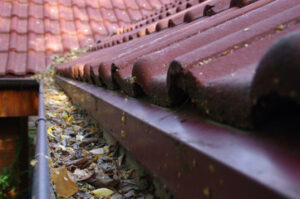 Gutter guards help prevent leaves, twigs, and other debris from entering the gutter system, reducing the risk of clogs that can cause water damage to your home. They can also deter rodents and insects from nesting in the gutter, preventing pest infestations. However, even the best-designed gutter systems require occasional attention to ensure nothing has caught up and is blocking rain flow. This is why gutter cleaning tools are important, especially for homeowners who don’t want to climb ladders to clean their gutters by hand.
Gutter guards help prevent leaves, twigs, and other debris from entering the gutter system, reducing the risk of clogs that can cause water damage to your home. They can also deter rodents and insects from nesting in the gutter, preventing pest infestations. However, even the best-designed gutter systems require occasional attention to ensure nothing has caught up and is blocking rain flow. This is why gutter cleaning tools are important, especially for homeowners who don’t want to climb ladders to clean their gutters by hand.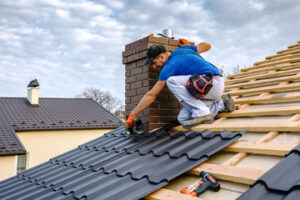 Roofing companies
Roofing companies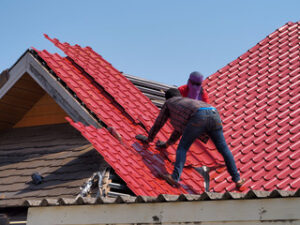 Sales roofers are different from your typical roofer. They usually don’t do insurance work, but they’ll give you an in-depth presentation. Salesmen may even attract your business by offering zero-percent financing and requiring you to pay out of pocket for the work. But there are better options than these roofers, but they may be competitive and have more crews. Service roofers are more likely to offer warranties as they have the resources to complete many jobs.
Sales roofers are different from your typical roofer. They usually don’t do insurance work, but they’ll give you an in-depth presentation. Salesmen may even attract your business by offering zero-percent financing and requiring you to pay out of pocket for the work. But there are better options than these roofers, but they may be competitive and have more crews. Service roofers are more likely to offer warranties as they have the resources to complete many jobs.